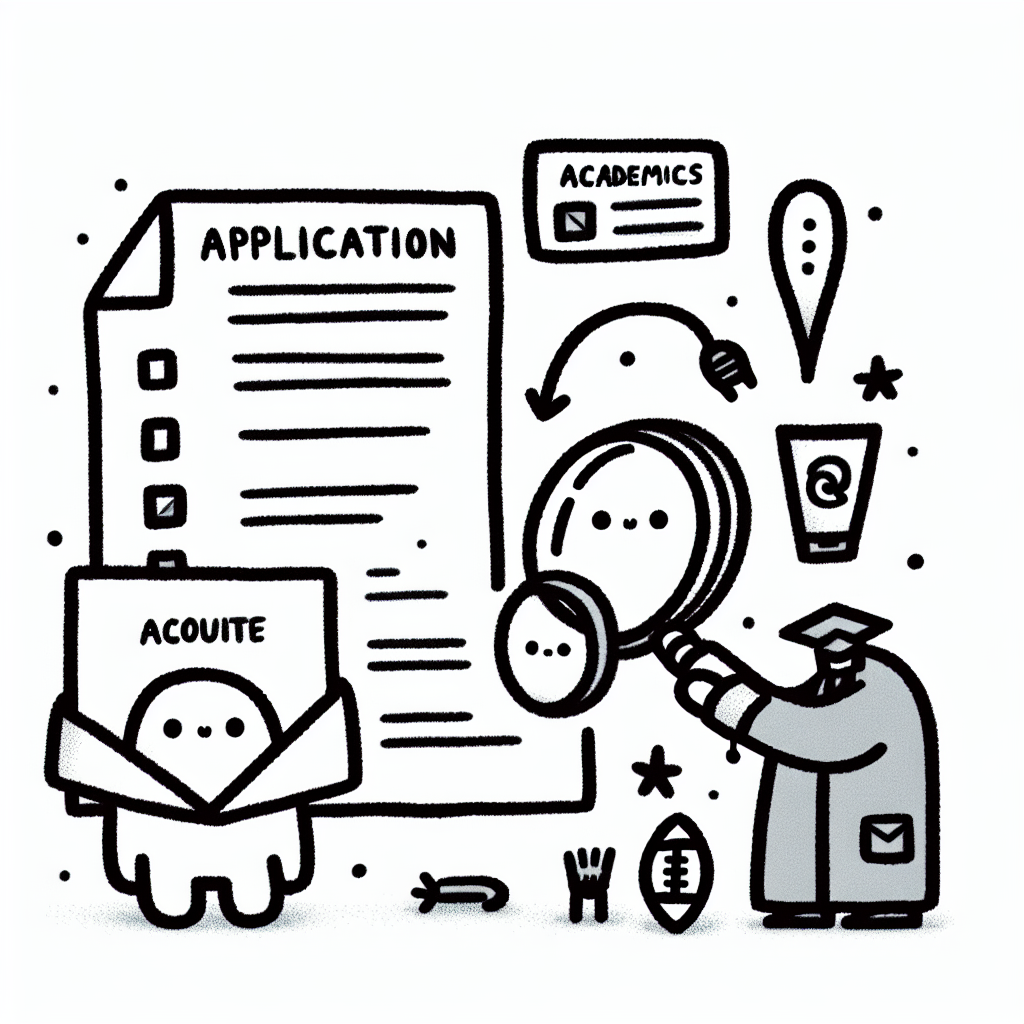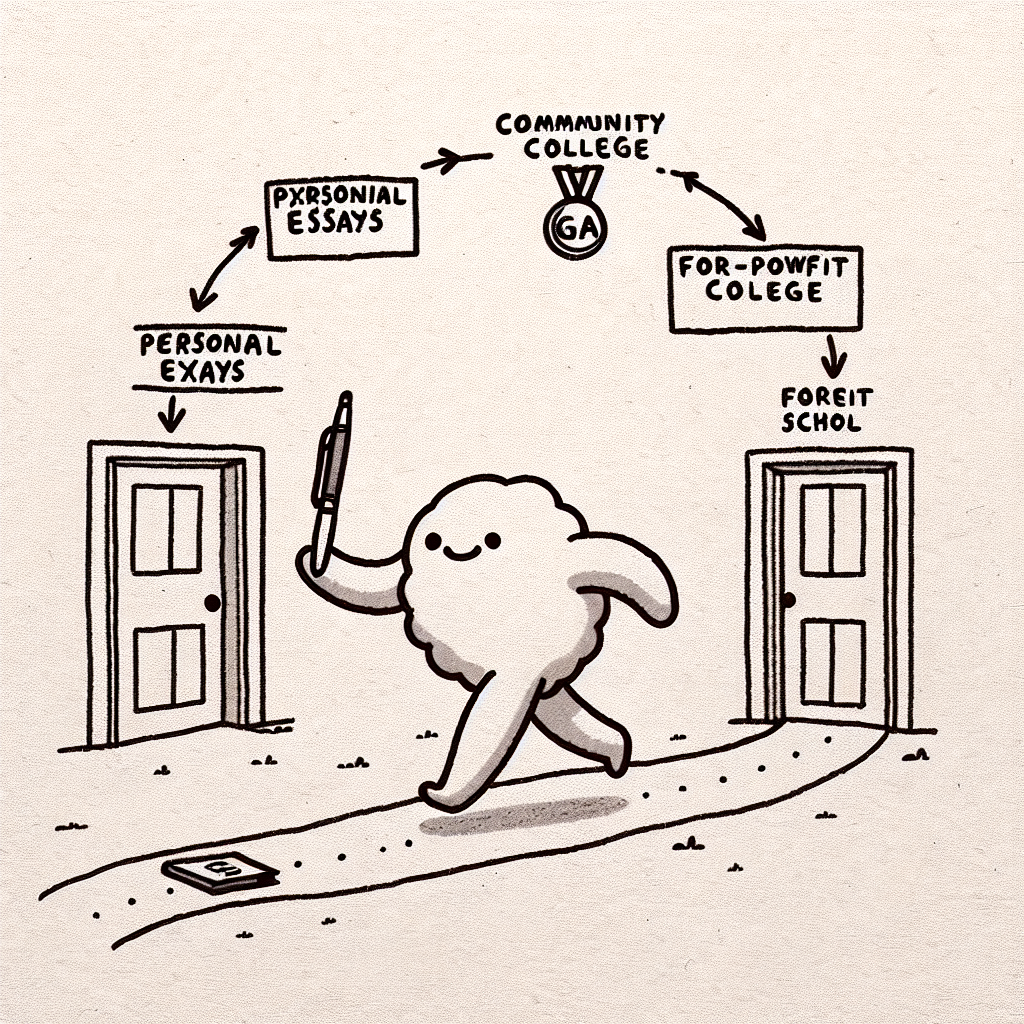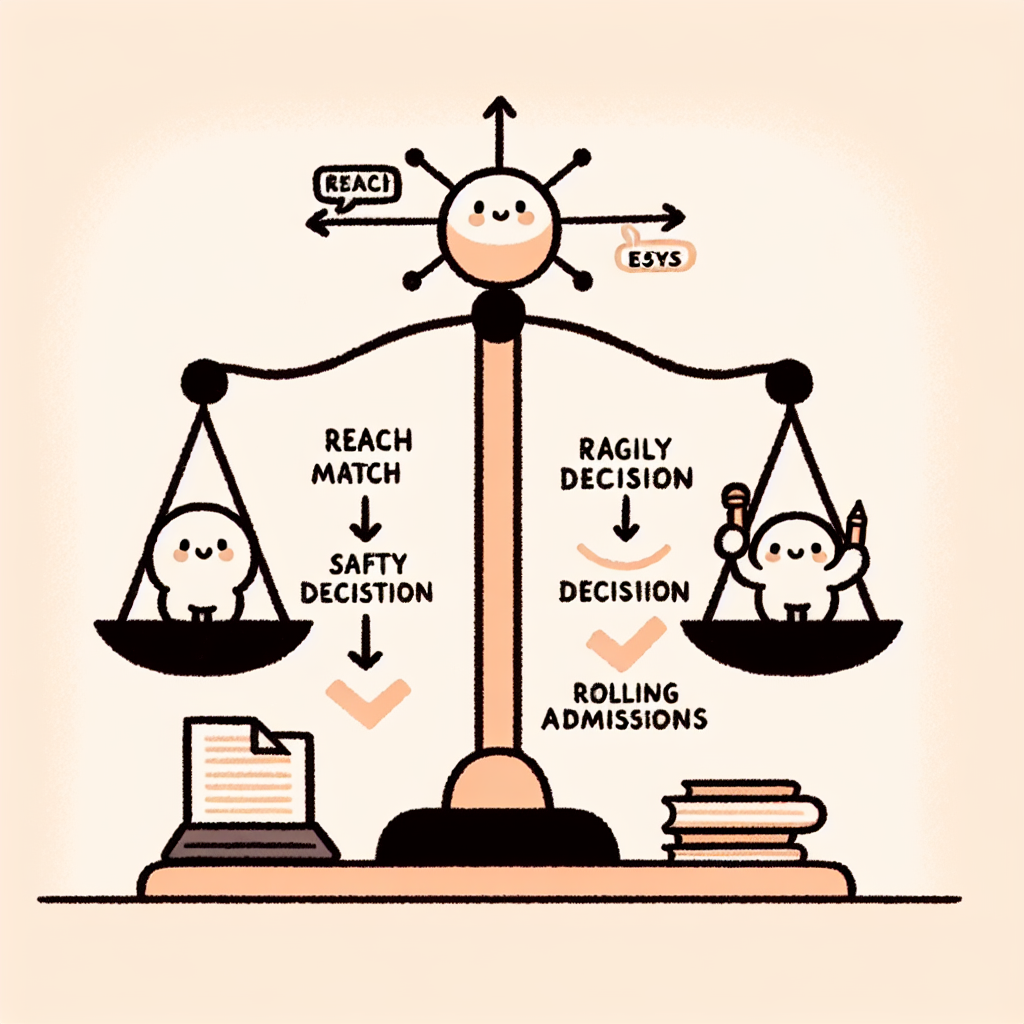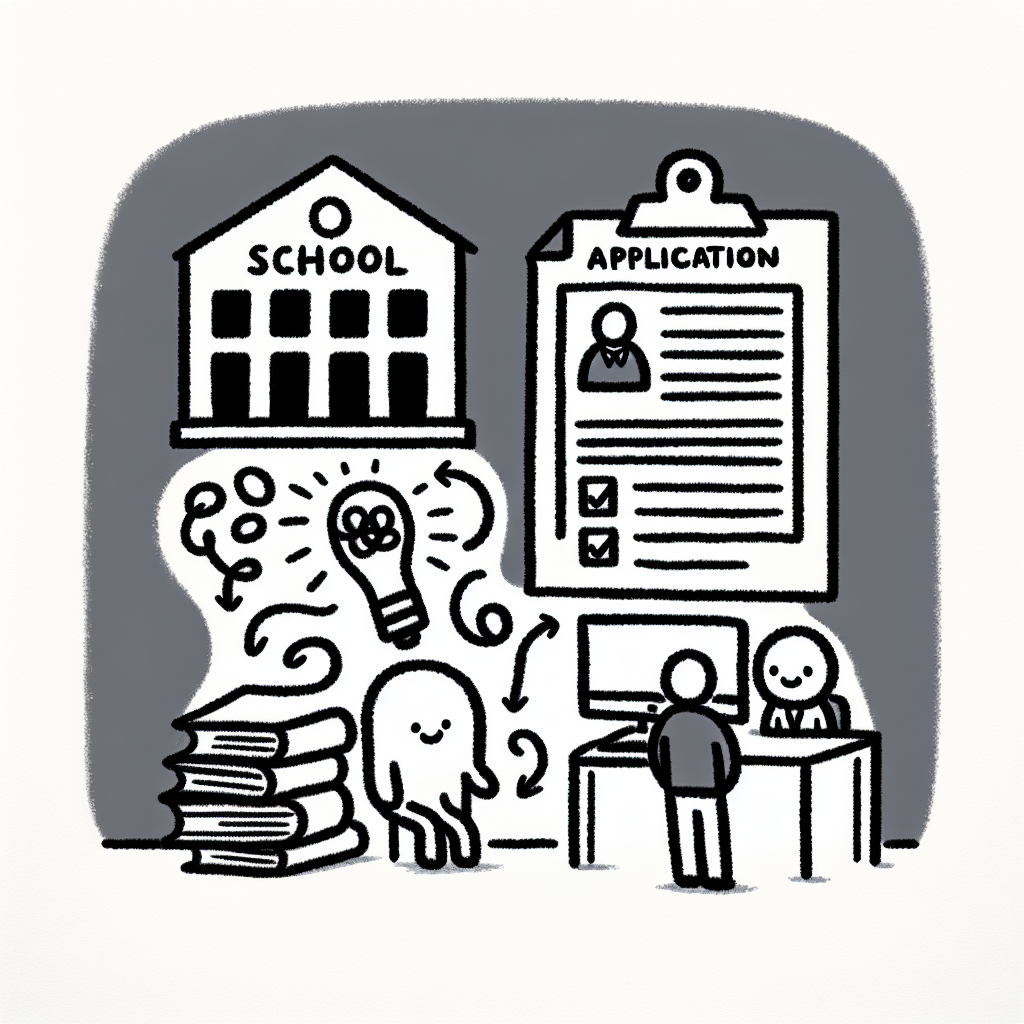Introduction
The college application review process is a critical step in determining who gains admission to higher education institutions. Each year, admissions committees evaluate thousands of applications, weighing academic records, test scores, extracurricular activities, essays, and letters of recommendation. Understanding how colleges review applications helps students and families navigate the process more effectively.
As application numbers continue to rise, the competition for admission grows more intense. According to U.S. News, many colleges are receiving more applications than ever before. This surge is driven by factors such as the expansion of test-optional policies and the increased ease of submitting applications through platforms like the Common App.
In this evolving landscape, it's more important than ever to understand how the college application review process works. Admissions trends are shifting, and knowing what colleges look for can provide applicants with a clearer path to success.

What Do Colleges Look For?
When conducting a college application review, admissions officers evaluate a range of academic and personal factors to determine a student's potential fit and success at their institution.
Academic Performance
A student's academic record is a foundational element in the college application review process. GPA is a key metric, with both weighted and unweighted versions considered. Weighted GPAs take into account the difficulty of coursework, such as AP, IB, and Honors classes, while unweighted GPAs provide a standard 4.0 scale measure. Admissions officers also assess the rigor of a student’s curriculum relative to what was available at their school.
Class rank, if provided, offers additional context by showing how a student compares to their peers. Trends in grades over time are also important—an upward trajectory may indicate resilience and growth.
Standardized Test Scores
SAT and ACT scores can still play a role in college application review, especially at schools that require them. However, with the rise of test-optional policies, many institutions now allow applicants to decide whether to submit scores. In these cases, the absence of test scores shifts the focus to other components of the application.
For students who do submit scores, average benchmarks vary by institution. Resources like How to Find Admissions Statistics for College can help applicants research typical score ranges for their target schools.
Personal Components
Beyond academics, colleges examine personal elements to gain a fuller picture of the applicant. The personal statement and supplemental essays offer insight into a student’s character, goals, and writing ability. Letters of recommendation provide external perspectives on a student’s academic and personal qualities.
Extracurricular involvement, leadership roles, and community service demonstrate commitment and initiative outside the classroom. When offered, interviews may further illuminate the applicant’s personality and interests. All of these personal components contribute significantly to a holistic college application review.

🔍 Tools and Resources for Self-Assessment
U.S. News College Admissions Calculator
The U.S. News College Admissions Calculator is a free tool that helps students estimate their chances of being accepted to particular colleges. It uses data such as GPA, standardized test scores, extracurricular activities, and intended major to generate a probability score (U.S. News College Admissions Calculator).
It's important to interpret the results as probabilities, not certainties. A high likelihood of admission does not guarantee acceptance, and a lower probability does not mean rejection is certain. The tool provides a general sense of competitiveness but should not be the sole factor in making college decisions.
There are limitations to the calculator. It cannot account for subjective factors such as essays, recommendation letters, or institutional priorities. Additionally, data inputs may not reflect the most recent admissions cycles, so results should be viewed in context.
Finding and Analyzing Admissions Data
To conduct a thorough college application review, students should locate and analyze admissions data such as acceptance rates, average GPAs, and test score ranges. Resources like the Common Data Set and official college websites often provide this information. U.S. News also offers guidance on how to find and interpret these statistics (How to Find Admissions Statistics for College).
Understanding each institution's priorities can further inform self-assessment. Factors like legacy status, geographic diversity, and first-generation college attendance can influence admissions decisions and may not be reflected in raw data alone.
Using Multiple Tools for Comparison
A comprehensive college application review benefits from using multiple tools. Pairing the U.S. News calculator with Common Data Sets can provide both numerical estimates and official institutional data.
Platforms like Naviance, College Board’s BigFuture, and school-specific portals allow students to compare admissions trends, student profiles, and institutional characteristics. Using several tools together creates a more accurate and nuanced picture of one’s admissions outlook.

📈 Trends in College Admissions
Surge in Application Volume
College admissions have seen a significant shift with a 5.5% increase in freshman enrollment in 2024, reflecting a broader surge in college application volume (College Applications Are on the Rise). This rise includes not only traditional four-year institutions but also community colleges and for-profit schools, indicating a diversification in student choices.
As application numbers grow, selectivity at many institutions has intensified, making the college application review process more competitive. Students are now encouraged to apply strategically, tailoring their applications to highlight strengths that align with each institution’s values and priorities.
Test-Optional Era
The shift to test-optional policies has substantially influenced the college application review process. Many colleges no longer require SAT or ACT scores, prompting admissions officers to place greater emphasis on other aspects of the application.
For students applying without test scores, it's essential to strengthen other components such as GPA, course rigor, extracurricular involvement, and personal essays. These elements now carry more weight in demonstrating academic readiness and personal character.
Increased Emphasis on Holistic Review
With the decline of standardized testing requirements, colleges are placing more importance on holistic review during the college application review. This means essays, recommendation letters, and demonstrated interest are playing a larger role in decision-making.
Admissions committees also consider applicants within the context of their environment—such as socioeconomic background, access to advanced coursework, and support systems. This contextual evaluation helps ensure fairness and equity, enabling colleges to identify potential beyond traditional academic metrics.

Strategic Application Planning
Building a Balanced College List
A strong college application review starts with a well-balanced college list. Applicants should categorize their prospective schools into three groups:
- Reach schools: These are institutions where admission is highly competitive, and the applicant's academic credentials may be below the school's average.
- Match schools: These schools align closely with the applicant’s GPA and standardized test scores, offering a reasonable chance of admission.
- Safety schools: These are institutions where the applicant’s academic profile exceeds the typical admitted student, making acceptance likely.
Using GPA and test score data helps students target schools more effectively. However, numbers alone aren't enough. Consider academic fit (majors offered, class sizes), social fit (campus culture, extracurriculars), and financial fit (tuition costs, aid opportunities).
Timing and Deadlines
Understanding application timelines is essential for strategic planning. There are several options:
- Early Decision (ED): A binding commitment to attend if accepted. It can improve chances at selective schools but limits flexibility.
- Early Action (EA): Non-binding, allows students to apply early and receive decisions sooner.
- Regular Decision: The standard timeline, offering more time to strengthen applications.
- Rolling Admissions: Schools review applications as they arrive. Applying early can be an advantage, as spots fill continuously.
Staying ahead of deadlines ensures that no part of the application is rushed or overlooked.
Common Mistakes to Avoid
One of the most frequent missteps in the college application review process is over-focusing on elite institutions. Many students apply only to highly selective schools, neglecting solid match or safety options. As noted in Avoid These Big College Application Mistakes, this can lead to disappointing results.
Ignoring school-specific application requirements is another pitfall. Each college may have unique prompts, deadlines, or supplemental materials. Missing these details can weaken an otherwise strong application.
Finally, undervaluing non-academic components—such as essays, recommendations, and extracurriculars—can hurt an applicant's chances. These elements provide context and personality, helping admissions officers understand the whole student beyond grades and scores.

The Application Process: Step-by-Step
Step 1: Researching Schools
The college application review begins long before the submission of forms—it starts with researching schools. Students use college search tools and rankings to identify institutions that match their academic interests, financial needs, and campus culture. Campus visits and virtual tours offer a closer look at student life and help applicants determine if a school feels like the right fit.
Step 2: Preparing Materials
A crucial part of the college application review is assembling the required documents. Students must gather their high school transcripts, request letters of recommendation from teachers or counselors, and begin drafting personal essays. These essays often go through multiple revisions to effectively convey the applicant’s voice and experiences.
Step 3: Completing Applications
Applicants typically use platforms such as the Common App, Coalition App, or individual school portals to apply. Understanding each platform’s requirements is essential to ensure completeness and accuracy. In addition, students should explore fee waivers if cost is a concern, and complete financial aid forms like the FAFSA and CSS Profile to be considered for aid.
Step 4: Submitting and Following Up
After submitting applications, students receive confirmation emails and access to application portals where they can track their status. Some colleges may also require or offer interviews. Preparing for these interviews and sending thank-you notes afterward can positively impact the college application review.
Step 5: Understanding Admissions Decisions
Once decisions are released, students may receive an admit, deny, waitlist, or deferral decision. Each outcome requires a different response, such as accepting an offer, appealing a decision, or making alternative plans. For more guidance, refer to A Complete Guide to the College Application Process.

Conclusion
The college application review process can seem daunting, but with the right approach, students can navigate it successfully. Preparation is key—taking time to understand application requirements, deadlines, and what colleges look for in candidates sets a strong foundation. Researching schools thoroughly ensures that applicants find programs aligned with their academic and personal goals.
Reflection is equally important. By evaluating their strengths, experiences, and aspirations, students can present themselves authentically and compellingly in their applications. Harnessing available data and tools—such as admissions statistics, essay guides, and peer insights—empowers applicants to make informed decisions and improve the quality of their submissions.
Approaching the college application review process with both confidence and realism helps manage expectations while encouraging students to put forth their best effort. With a thoughtful strategy, applicants can increase their chances of finding a school that is the right fit for their future.














